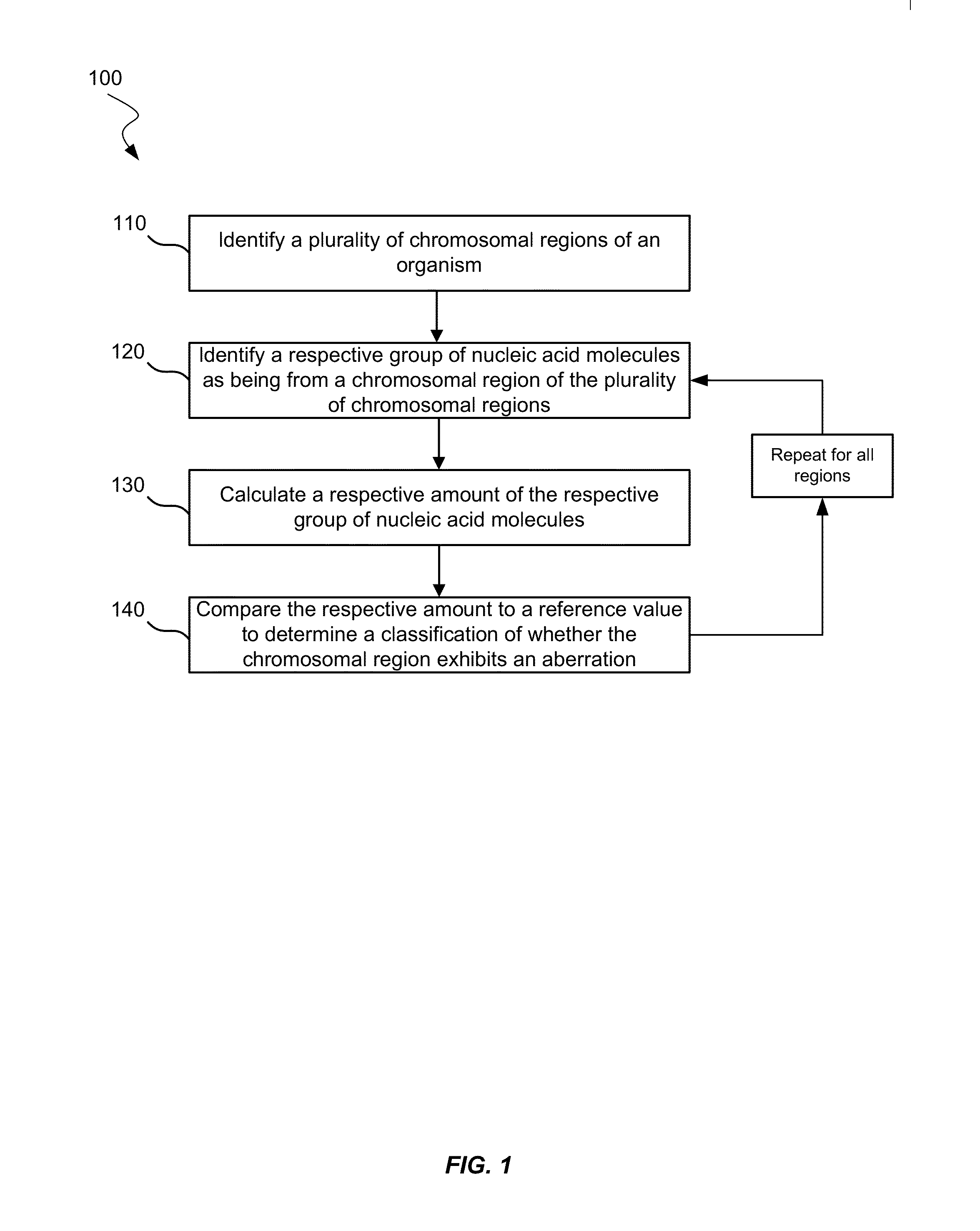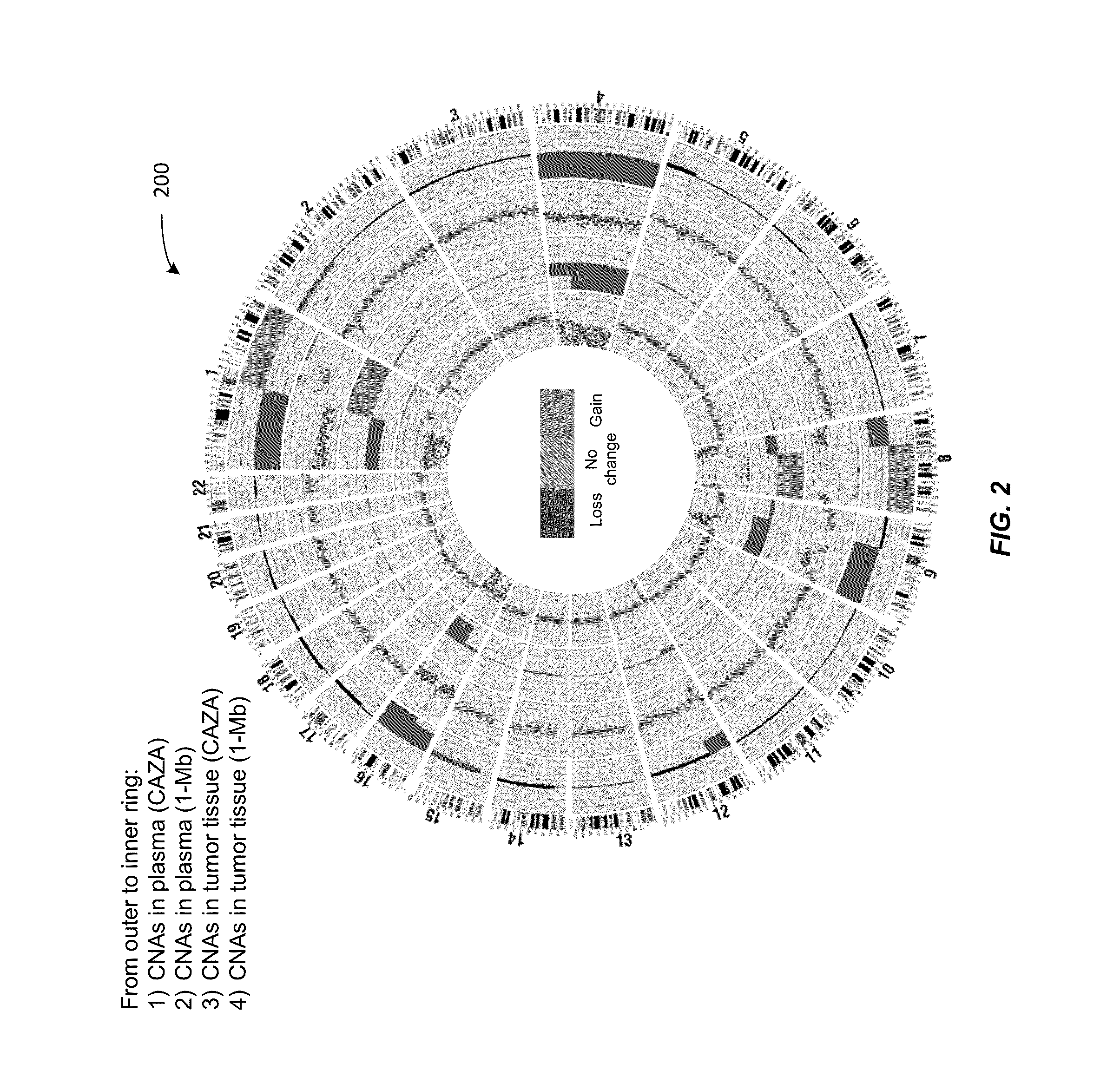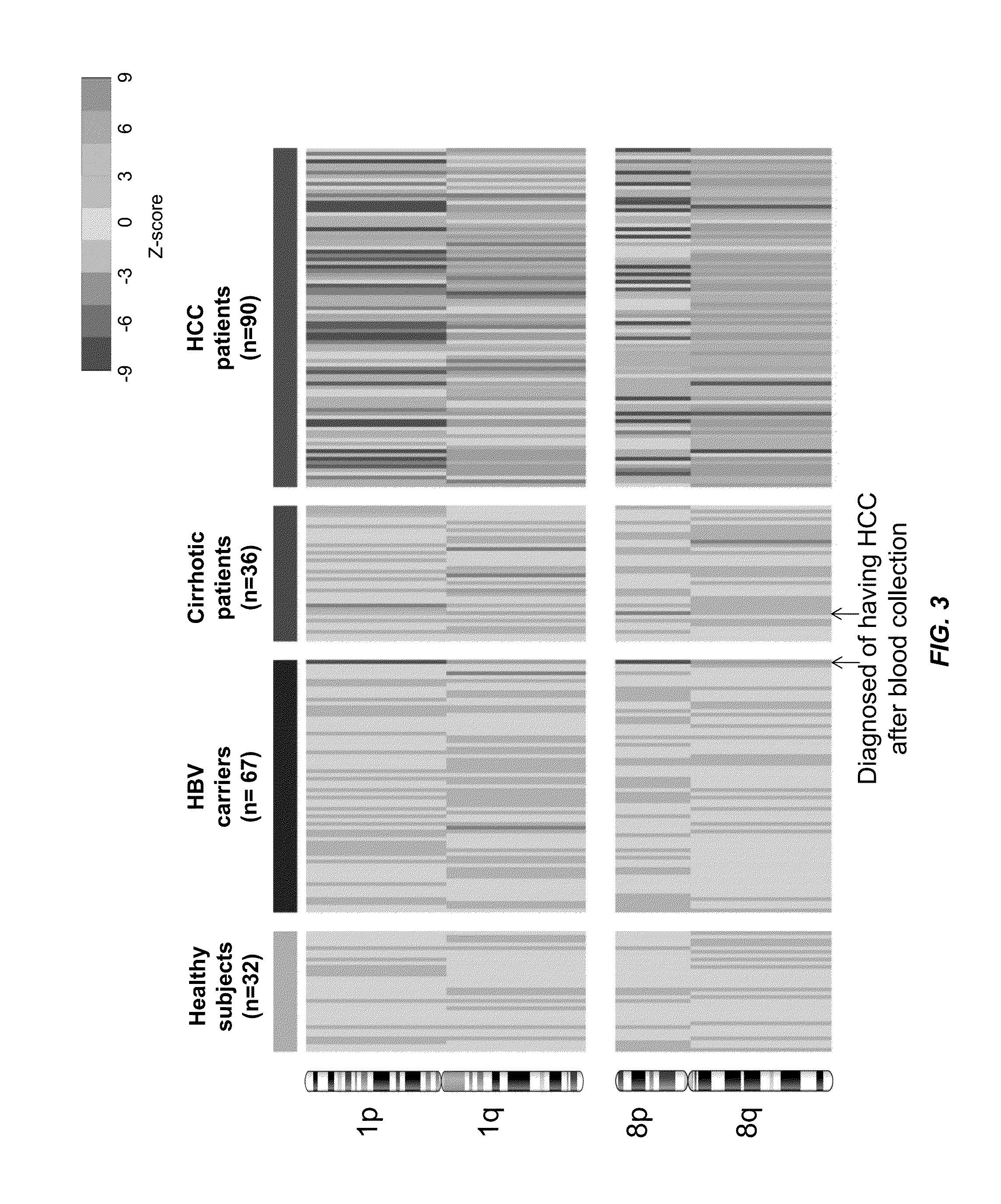Using size and number aberrations in plasma DNA for detecting cancer
a plasma dna and aberration technology, applied in the field of using size and number aberrations in plasma dna for detecting cancer, can solve the problems of low sensitivity and specificity, no cancer type can be identified, and imaging techniques have difficulty in identifying tumors less than 2 cm in siz
- Summary
- Abstract
- Description
- Claims
- Application Information
AI Technical Summary
Benefits of technology
Problems solved by technology
Method used
Image
Examples
example cases
[0180]D. Example Cases
[0181]The specificity of the detection of cancer-associated CNA can be improved by plasma DNA size analysis, as shown in the following two cases. Case 1 was a patient with hepatitis B-associated cirrhosis, and Case 2 was a chronic carrier of hepatitis B infection. Both of them were not known of having any cancer at the time of recruitment. They had been followed clinically for two years since recruitment and no cancer was detected. Venous blood was collected from each of the two subjects at recruitment. The plasma DNA was sequenced. CNA involving chromosome 1q was detected in each of these two patients. For Case 1, the z-score for 1p and 1q were −2.3 and 15.5, respectively. These results are consistent with the interpretation of 1q amplification. In the plasma DNA fragment size analysis, the ΔS was −0.019. The negative value of ΔS indicates that short DNA fragments were less abundant in 1q compared with 1p. As the count-based analysis suggests that 1q was ampli...
PUM
| Property | Measurement | Unit |
|---|---|---|
| size | aaaaa | aaaaa |
| size | aaaaa | aaaaa |
| size distribution | aaaaa | aaaaa |
Abstract
Description
Claims
Application Information
 Login to View More
Login to View More - R&D
- Intellectual Property
- Life Sciences
- Materials
- Tech Scout
- Unparalleled Data Quality
- Higher Quality Content
- 60% Fewer Hallucinations
Browse by: Latest US Patents, China's latest patents, Technical Efficacy Thesaurus, Application Domain, Technology Topic, Popular Technical Reports.
© 2025 PatSnap. All rights reserved.Legal|Privacy policy|Modern Slavery Act Transparency Statement|Sitemap|About US| Contact US: help@patsnap.com



